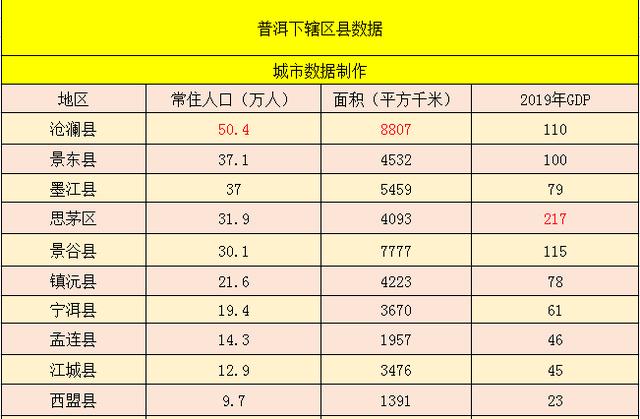shell编程菜鸟教程(shell编程基础入门)
一、什么叫shell【例】先看一个简单的shell程序,我来为大家科普一下关于shell编程菜鸟教程?下面希望有你要的答案,我们一起来看看吧!

shell编程菜鸟教程
一、什么叫shell
【例】先看一个简单的shell程序
|
123456789101112131415161718 | [root@hpc test]# vim example01.sh #写入以下内容#!/bin/bash#This is to show what a example looks like.echo "Our first example"echo # This inserts an empty line in output.echo "We are currently in the following directory."pwdechoecho "This directory contains the following files"ls[root@hpc test]# chmod x example01.sh [root@hpc test]# ./example01.sh Our first exampleWe are currently in the following directory./root/testThis directory contains the following filesexample01.sh |
shell就是系统跟计算机硬件交互时使用的中间介质,它只是系统的一个工具。实际上,在shell和计算机硬件之间还有一层东西那就是系统内核了。打个比方,如果把计算机硬件比作一个人的躯体,而系统内核则是人的大脑,至于shell,把它比作人的五官似乎更加贴切些。回到计算机上来,用户直接面对的不是计算机硬件而是shell,用户把指令告诉shell,然后shell再传输给系统内核,接着内核再去支配计算机硬件去执行各种操作。
1.1 shell编程
编程语言:
1.机器语言
2.汇编语言
3.高级语言
(1)静态语言Dynamically Typed Language:编译型语言 c c java
(2)动态语言Statically Typed Language:解释型语言 php shell python perl
编译器:(解释器) 将人类理解的语言翻译成机器理解的语言
弱类型:变量随时用随时声明
强类型:变量在使用前,必须事先声明
其中shell是弱类型的编程语言
#!/bin/bash #!跟shell命令的完全路径。作用:显示后期命令以哪种shell来执行这些命令。如不指shell,以当前shell作为执行的shell。
| 12 | [root@hpc test]# ll /bin/sh #查看/bin/sh的软连接 lrwxrwxrwx. 1 root root 4 Dec 18 2012 /bin/sh -> bash |
以shell中以#开始头表示,整个行就被当作一个注释。执行时被忽略。
shell程序一般以.sh结尾,当然主要是看是否为执行,然后看里面有没有#!
1.2 总结
§创建shell程序的步骤:
§ 第一步:创建一个包含命令和控制结构的shell文件。
§ 第二步:修改这个文件的权限使它可以执行。使用chmod u x
§ 第三步:执行
| 1234 | 方法1:./example01.sh方法2: 使用绝对路径 [root@hpc test]# /root/test/example01.sh方法3:[root@hpc test]# bash example01.sh方法4:[root@hpc test]#source/sh example01.sh #注:example01.sh可以不用x权限 |
二、shell变量及运用
1 shell变量
变量是shell 传递数据的一种方法。变量是用来代表每个值的符号名。
例: x=3
Shell 有两类变量:临时变量和永久变量。
1.1临时变量:是shell 程序内部定义的,其使用范围仅限于定义它的程序,对其它程序不可见。
1.2永久变量:是环境变量,其值不随shell 脚本的执行结束而消失。
【例】$PATH
| 123 | [root@hpc test]# echo $PATH/usr/lib64/qt-3.3/bin:/usr/local/sbin:/usr/sbin:/sbin:/usr/local/bin:/usr/bin:/bin:/root/bin#用作运行某个命令的时候,本地查找不到某个命令或文件,会到这个声明的目录中去查找。 |
1.3用户定义变量:由字母或下划线打头,不允许数字开头,后面由字母、数字或下划线组成,并且大小写字母意义不同。变量名长度没有限制。
使用变量值时,要在变量名前加上前缀“$”。
例如:1VAR 是非法变量。
2 主要赋值类型
2.1 变量赋值 赋值号“=”两边应没有空格。
【例】 用“=”对变量赋值
| 123 | [root@hpc test]# A=aaa[root@hpc test]# A = aaabash: A: command not found |
2.2将一个命令的执行结果赋给变量
| 123 | [root@hpc test]# A=`date`[root@hpc test]# echo $ASat Feb 7 20:54:26 CST 2015 |
【例】 用“=”对命令赋值
| 1234 | [root@hpc test]# B=$(ls -l)[root@hpc test]# echo $B[root@hpc test]# A=$B[root@hpc test]# echo $A |
2.3可以利用变量和其它字符组成一个新的字符串
| 12345678910 | [root@hpc test]# MYDIR=/home/mk[root@hpc test]# echo $MYDIR/zhangsan/home/mk/zhangsan[root@hpc test]# DAY=mon[root@hpc test]# echo Today is $DAYdayToday is[root@hpc test]# echo Today is $DAY dayToday is mon day[root@hpc test]# echo Today is ${DAY}dayToday is monday |
2.4 给变量赋值多个单词
| 123456 | [root@hpc test]# NAME="mike Ron"[root@hpc test]# echo $NAMEmike Ron[root@hpc test]# NAME='shen mk'[root@hpc test]# echo $NAMEshen mk |
【例】 赋值时“”和’’的区别
| 123 | [root@hpc test]# NAME="mike Ron $NAME"[root@hpc test]# echo $NAMEmike Ron shen mk |
| 123 | [root@hpc test]# NAME='mike Ron $NAME' [root@hpc test]# echo $NAMEmike Ron $NAME |
总结:单引号:之间的内容原封不动地指定给了变量。
双引号:特殊符号的含义保留。
【例】 变量与符号的综合演示
| 123456789 | [root@hpc shell]# a=192.168.1.63[root@hpc shell]# b='192.168.1.63'[root@hpc shell]# c="192.168.1.63"[root@hpc shell]# echo "a=$a" a=192.168.1.63[root@hpc shell]# echo 'b=$b'b=$b[root@hpc shell]# echo "c=${c}" #c=${c}等同c=$cc=192.168.1.63 |
2.5 把命令当作变量进行定义
| 123456 | [root@hpc shell]# wen=`date %F` #利用反引号进行定义[root@hpc shell]# echo $wen2015-02-15 [root@hpc shell]# wen=$(date) #利用小括号加$进行定义[root@hpc shell]# echo $wenSun Feb 15 12:42:30 CST 2015 |
3 对变量的管理
3.1列出所有的变量
set 命令,例:
| 12 | [root@hpc test]# set | grep DAYDAY=mon |
3.2删除变量
| 1234 | [root@hpc test]# echo $NAMEmike Ron $NAME[root@hpc test]# unset NAME[root@hpc test]# echo $NAME |
4位置变量和特殊变量
4.1 位置变量
Shell解释执行用户的命令时,将命令行的第一个字作为命令名,而其它字作为参数。由出现在命令行上的位置确定的参数称为位置参数。
使用$N 来表示
$0 获取当前执行shell脚本的文件文件名,包括脚本路径
$n 获取当前脚本的第n个参数 n=0,1,2.....n 当n大于9时 用{n}表示。
【例】快速生成$1-$9
方法一:
| 12345678910 | [root@hpc shell]# seq 9|sed 's#[0-9]#$&#g'>nsh #seq 9生成1-9之间的数,&为前面需要替换的字符$1$2$3$4$5$6$7$8$9 |
方法二:
| 12345 | [root@hpc shell]# seq -s " $" 1 9|sed 's#1#$1#'>n.sh #-s为指定分隔符后面的替换为seq -s " $" 1 9生成的第一个数为没$符的所以应替换$1 $2 $3 $4 $5 $6 $7 $8 $9 [root@hpc shell]# sed -i 's@$1@echo &@ ' n.sh 执行:[root@hpc shell]# sh n.sh `seq -s "" 9` #可快速赋值 1 2 3 4 5 6 7 8 9 |
4.2 特殊变量
有些变量是一开始执行Script脚本时就会设定,且不能被修改,但我们不叫它只读的系统变量,而叫它特殊变量。这些变量当一执行程序时就有了,以下是一些等殊变量:
$* 这个程序的所有参数
$# 这个程序的参数个数
$$ 这个程序的PID
$! 执行上一个后台程序的PID
$? 执行上一个指令的返回值
【例】 [
| 123456 | root@hpc shell]# cat n.sh echo $1 $2 $3 $4 $5 $6 $7 $8 $9echo $* : $# : $@ 执行结果:[root@hpc shell]# sh n.sh `seq 9`1 2 3 4 5 6 7 8 91 2 3 4 5 6 7 8 9 : 9 : 1 2 3 4 5 6 7 8 9 |
【例】分别取出路径和文件名
分析:利用$0得到当前执行的路径 分别进行输出
| 12345678 | 脚本:[root@hpc shell]# cat 0.sh echo $0dirname $0basename $0执行结果:[root@hpc shell]# sh /shell/0.sh /shell/0.sh #执行的全路径/shell #执行的目录 0.sh #执行的文件名 |
【例】位置变量在服务启动与停止中的应用
| 123456789101112131415 | [root@hpc shell]# vim /etc/init.d/vsftpd case "$1" in #相当于执行/etc/init.d/vsftpd $1 start) start #当选择start时 调用start函数来启动服务 ;; stop) stop #当选择stop时 调用stop函数来停止服务 ;; restart|reload) #当选择restart或者reload时 先停止服务 在启动服务 stop start RETVAL=$? ;; echo $"Usage: $0 {start|stop|restart|try-restart|force-reload|status}" #当输入的$1不存在时利用$0 来打印当前的执行脚本的方法 |
补充:关于$?返回值的主要含义
| $0 | 运行成功 |
| $2 | 权限被拒绝 |
| $1--$125 | 运行失败,命令错误或者参数错误 |
| $126 | 找到命令,但是不能执行 |
| $127 | 未找到改命令 |
| $128 | 命令被系统强制结束 |
5小综合实例
5.1变量在shell中的使用
| 12345678910111213141516 | [root@hpc test]# cat z1.sh #!/bin/bash #写入如下var1="abcd efg"echo $var1var2=1234echo "The value of var2 is $var2"echo $HOMEecho $PATHecho $PWD执行结果:[root@hpc test]# ./z1.sh abcd efgThe value of var2 is 1234/root/usr/lib64/qt-3.3/bin:/usr/local/sbin:/usr/sbin:/sbin:/usr/local/bin:/usr/bin:/bin:/root/bin/root/test |
5.2 特殊变量的测试
| 12345678910111213141516 | [root@hpc test]# cat z.sh #!/bin/bash #写入如下echo "$* 表示这个程序的所有参数 "echo "$# 表示这个程序的参数个数"touch /tmp/a.txtecho "$$ 表程序的进程ID "touch /tmp/b.txt &echo "$! 执行上一个后台指令的PID"echo "$$ 表程序的进程ID "执行结果:[root@hpc test]# ./z.sh aaa bbb cccaaa bbb ccc 表示这个程序的所有参数 3 表示这个程序的参数个数3899 表程序的进程ID 3901 执行上一个后台指令的PID3899 表程序的进程ID |
6 变量的数值计算常用的命令:(())
6.1 (())用于执行简单的整数运算
格式:$((算数运算符))
6.2 常用的算数运算符
| 运算符 | 意义 |
| —— | 递增及递减,可前置也可以后置 |
| — ! ~ | 一元运算的正负号 逻辑与取反 |
| — * / % | 加减乘除与余数 |
| <<= >>= | 比较大小符号 |
| == != | 相等 不相等 |
| >><< | 向左位移 向右位移 |
| & ^ | | 位的与 位的异或 位的或 |
| && || | 逻辑与 逻辑或 |
| ?: | 条件判断 |
【例】三种简单的赋值运算
| 12345678 | [root@hpc shell]# ((a=1 2**3-4%3)) #2**3为2的3次方[root@hpc shell]# echo $a 8[root@hpc shell]# b=$((1 2**3-4%3)) [root@hpc shell]# echo $b8[root@hpc shell]# echo $((1 2**3-4%3)) #省去了定义一个变量8 |
【例】递增 递减的应用
| 123456789101112 | [root@hpc shell]# echo $((a =1))9[root@hpc shell]# echo $((a )) #等同于a =110[root@hpc shell]# echo $((a--)) 11[root@hpc shell]# echo $a #a 或a--为先赋值 再a加1或a减110[root@hpc shell]# echo $((--a))9[root@hpc shell]# echo $a #--a或 a为先a加1或a减1 再进行a的赋值9 |
【例】 比较大小
| 1234 | [root@hpc shell]# echo $((1>2)) 0[root@hpc shell]# echo $((1<=2)) #真为1 假为0 1 |
【例】1到100所有整数和
| 12 | [root@hpc shell]# echo $((100*(1 100)/2))5050 |
【例】 写一个简单四则运算的脚本
| 123456789 | [root@hpc shell]# cat operation.sha=6b=2echo "a-b=$(($a-$b))"echo "a b=$(($a $b))"echo "a*b=$(($a*$b))"echo "a/b=$(($a/$b))"echo "a**b=$(($a**$b))"echo "a%b=$(($a%$b))" |
| 1234567 | 执行结果:[root@hpc shell]# sh operation.sh a-b=4a b=8a*b=12a/b=3a**b=36a%b=0 |
升级后的脚本
| 123456789 | [root@hpc shell]# cat operation.sh a=$1b=$2echo "a-b=$(($a-$b))"echo "a b=$(($a $b))"echo "a*b=$(($a*$b))"echo "a/b=$(($a/$b))"echo "a**b=$(($a**$b))"echo "a%b=$(($a%$b))" |
或者
| 123456789 | [root@hpc shell]# cat operation.sh read -p "enter a:" aread -p "enter b:" becho "a-b=$(($a-$b))"echo "a b=$(($a $b))"echo "a*b=$(($a*$b))"echo "a/b=$(($a/$b))"echo "a**b=$(($a**$b))"echo "a%b=$(($a%$b))" |
【例】写一个简单的计算器,并且有判断功能
| 123456789101112131415161718192021222324252627282930 | [root@hpc shell]# cat operation.sh function Enternum(){ read -p "Please enter the first number:" a read -p "Please enter the second number:" b Judgenum}function Enterchar(){ read -p "Please enter the transport operator:" c echo "****************" Judgechar}function Judgenum(){ if [[ $a =~ ^[0-9] $ && $b =~ ^[0-9] $ ]]; then #注意=~两边的空格 Enterchar else echo "Digital input errors, please reenter num" Enternum fi}function Judgechar(){ if [[ $c =~ "-"|" "|"*"|"/"|"%" ]];then echo $(($a$c$b)) else echo "Digital input errors, please reenter char" Enterchar fi}while truedo EnternumDone |
三、Read命令
1 定义
Read作用从键盘读入数据,赋给变量
【例】 对read的实验 #以空格为赋值分隔符
| 123456 | [root@hpc test]# read a b c1 32 3 [root@hpc test]# echo $a $b $c1 32 3[root@hpc test]# echo $a1 |
【例】在shell中使用read命令:
| 1234567 | [root@hpc test]# cat read.sh #!/bin/bash #写入如下echo "input first second third :"read first second thirdecho "the first parameter is $first"echo "the second parameter is $second"echo "the third parameter is $third" |
测试:
| 123456 | [root@hpc test]# ./read.sh input first second third :aa 11 33the first parameter is aathe second parameter is 11the third parameter is 33 |
2参数用法
2.1 read answer 从标准输入读取一行并赋值给变量answer
2.2 read first last 从标准输入读取一行,直至遇到第一个空白符或换行符。把用户键入的第一个词存到变量first中,把该行的剩余部分保存到变量last中
2.3 read –a arrayname 读入一组词,依次赋值给数组arrayname③
2.4 read –e 在交互式shell命令行中启用编辑器。
2.5 read –p prompt 打印提示符,等待输入,并将输入赋值给REPLY变量③
2.6 read –r line 允许输入包含反斜杠③
四、expr 命令
作用:Shell变量的算术运算:
1 expr命令:对整数型变量进行算术运算
语法: expr 表达式 #注意 运算符之间要有空格
| 123456789101112131415 | [root@hpc test]# expr 3 58[root@hpc test]# var1=8[root@hpc test]# var2=2[root@hpc test]# expexpand exportfs expresskeys export expr [root@hpc test]# expr $var1 - 53[root@hpc test]# expr $var1 / $var24[root@hpc test]# expr $var1 * $var2expr: syntax error[root@hpc test]# expr $var1 \* $var216 |
2 expr 程序的例子
| 12345678910111213 | [root@hpc test]# cat expr.sh #! /bin/sh a=10 b=20 c=30 value1=`expr $a $b $c` echo "The value of value1 is $value1" value2=`expr $c / $b` echo "The value of value2 is $value2" value3=`expr $c \* $b` #整除 echo "The value of value3 is $value3" value4=`expr $a $c / $b` echo "The value of value4 is $value4" |
测试:
| 12345 | [root@hpc test]# ./expr.sh The value of value1 is 60The value of value2 is 1The value of value3 is 600The value of value4 is 11 |
3 复杂的运算
| 123 | [root@hpc test]# var4=8[root@hpc test]# expr `expr 5 11` / $var42 |
【例】
| 12345 | [root@hpc test]# var1=8[root@hpc test]# var2=2[root@hpc test]# var4=`expr $var1 / $var2`[root@hpc test]# echo $var44 |
【例】 expr查找格式的应用
| 123456 | [root@hpc shell]# expr "test.pub" : ".*.pub"&& echo 1 || echo 0 8 # 8 为test.pub1 #左边为真则打印1[root@hpc shell]# expr "test.pu1b" : ".*.pub"&& echo 1 || echo 000 #左边为假则打印0 |
【例】用expr判断是否为整数
| 1234 | [root@hpc shell]# cat judge_int.sh read -p "input int: " aexpr $a 0 &>/dev/null #将所有执行信息重定向到null中[ $? -eq 0 ] && echo "int" || echo "input erro"#根据expr执行的返回值来判断是否为整数 |
免责声明:本文仅代表文章作者的个人观点,与本站无关。其原创性、真实性以及文中陈述文字和内容未经本站证实,对本文以及其中全部或者部分内容文字的真实性、完整性和原创性本站不作任何保证或承诺,请读者仅作参考,并自行核实相关内容。文章投诉邮箱:anhduc.ph@yahoo.com






